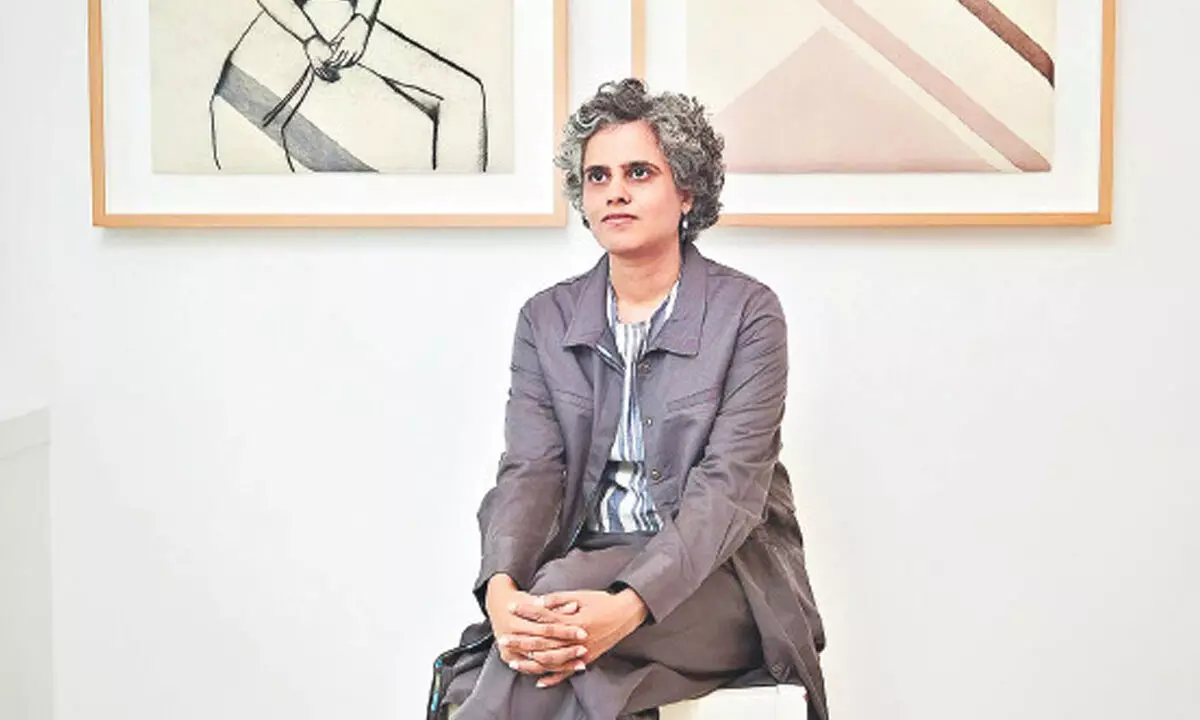Live
- They always want me to win, and now I feel lucky to have been offered a story like ‘Zebra’: Satyadev Kancharana
- ‘Democracy first, humanity first’: PM Modi in Guyana's parliament on two countries' similarities
- PKL Season 11: Telugu Titans register third straight win to top standings
- Is Pollution Contributing to Your COPD?
- NASA Unveils Underwater Robots for Exploring Jupiter's Moons
- Additional Central forces arrive in violence-hit Manipur
- AR Rahman and Saira Banu’s Divorce: Legal Insights into Common Issues in Bollywood Marriages
- 82.7 pc work completed in HPCL Rajasthan Refinery area: official
- Curfew relaxation extended in 5 Manipur districts on Friday
- Tab scam prompts Bengal govt to adopt caution over fund disbursement
Just In
Turnings on art: Curating and ‘un’-curating


‘‘Turning: On Field and Work’, curated by Vidya Shivadas, author and curator of the Visual Arts section (along with Veeranganakumari Solanki) at the recently concluded Serendipity Arts Festival in Goa brought together around 18 artists and institutions including Niroj Satpathy, Amol Patil, Benitha Perciyal, besides collectives like Panjeri Artists’ Union and Britto Arts Trust from Bangladesh
One of her biggest achievements is being invisible. Her presence in her absence suspends the entire work in the Visual Arts section in an inhibited space. There is a centre, but artworks are allowed to move freely, decide on their spaces, and find their own destiny. A certain freedom never leaves the delicate thread that touches everything that has been created. Long after you have seen/unseen all the artworks, a realisation of their togetherness erupts - not with force but with quiet camaraderie.
‘Turning: On Field and Work’, curated by Vidya Shivadas, author and curator of the Visual Arts section (along with Veeranganakumari Solanki) at the recently concluded Serendipity Arts Festival in Goa brought together around 18 artists and institutions including Niroj Satpathy, Amol Patil, Benitha Perciyal, besides collectives like Panjeri Artists’ Union and Britto Arts Trust from Bangladesh.
During the Covid pandemic, Shivadas, also the Director of the Foundation of Indian Contemporary Art (FICA) created a reading forum to associate with artists who are working with agriculture/farming. “They were interested in questions of indigenous farming and the lack of value and different concerns as well. This got me thinking, how does one think of farming and philosophize about it? How do we talk about the environment and other urgent questions?”
This had been growing in her mind for a long time. The curator notes that though artists for a long time now had been spending extensive energy on research, were not bringing this (research) aspect to the foreground. The same holds for archives as well. “Many artists’ works encountered at Serendipity are embedded in materials and come from deep-rooted knowledge. Now, interestingly, two people do not experience the same place in the same way, and neither do not follow the same methodology. Thus, what emerges is something truly enigmatic,” notes Shivadas.
Stressing that as a curator, she is pleased that the exhibition managed to move people at different levels as a whole and not just through the prism of single objects. “People could feel the connections. There is an interest in transformation, and witnessing a relationship being formed with everything around -- the want of being related to something. All the projects, in the most artistic of ways brought forth points of connection. Multiple themes came together and also stood out. I am glad the festival could support around seven major projects and several new projects also saw light of the day.”
Involving both senior and young artists, the curator has always been interested in the choreography of work, thinking first about the work and then the artists. “One whole wing looked at work and the materials that are around us: Bricks, seeds -- their qualities. The other one was about archives and collectives rising while the third dealt with displacement.”
Talking about FICA (Roshini and Parul Vadehra are the trustees), which gives grants to artists and is involved in art education, the curator says, “The artist community is not that very well supported and that is where we come in to create bridges. There is also a library, which can be transformed into a space for talks and interactions. There is a project space where inhabit it. The idea is also to think about how artists are creating.”
Observing that a lot of young artists are curating themselves, she smiles, “Maybe artists are more resourceful than the curatorial community. Interestingly, I see a whole generation of new writers (art writing), that is emerging,” she concludes.

© 2024 Hyderabad Media House Limited/The Hans India. All rights reserved. Powered by hocalwire.com






